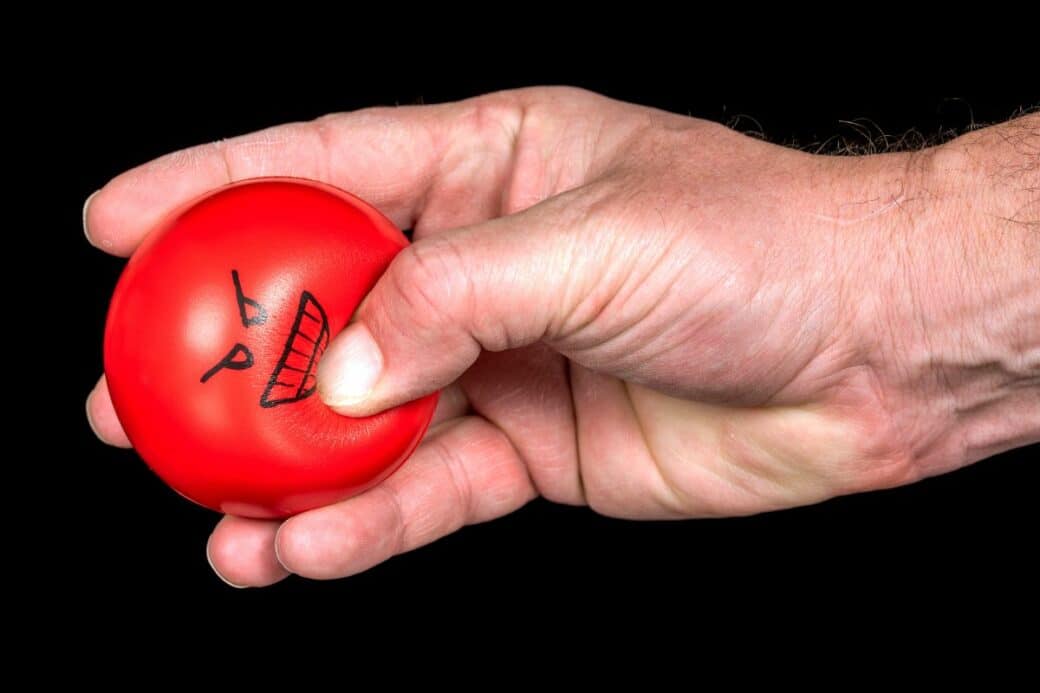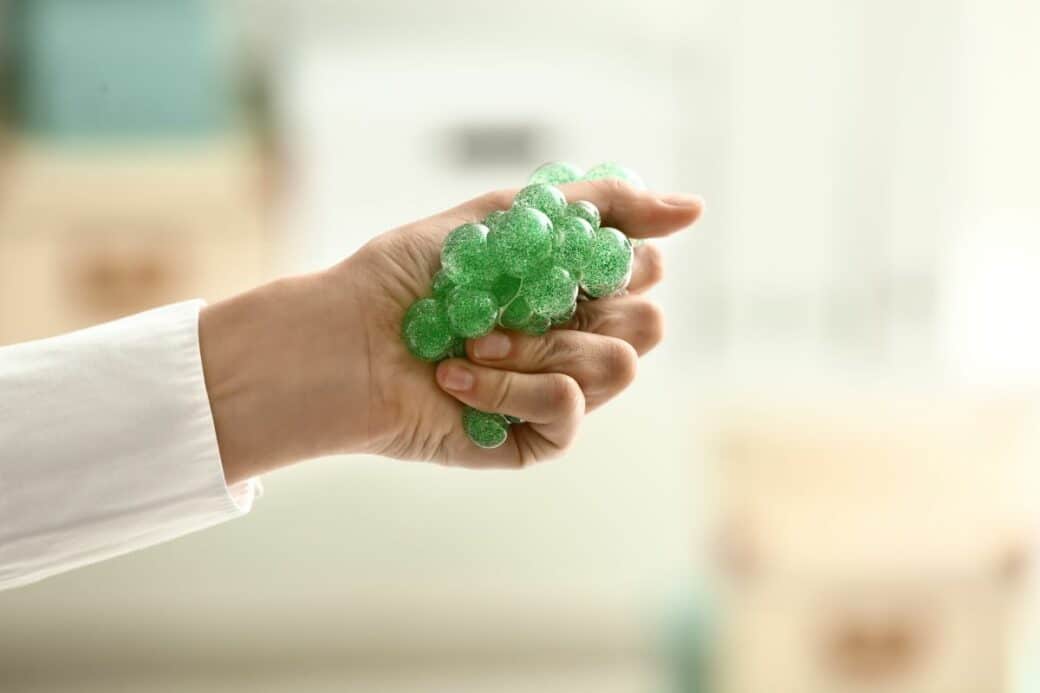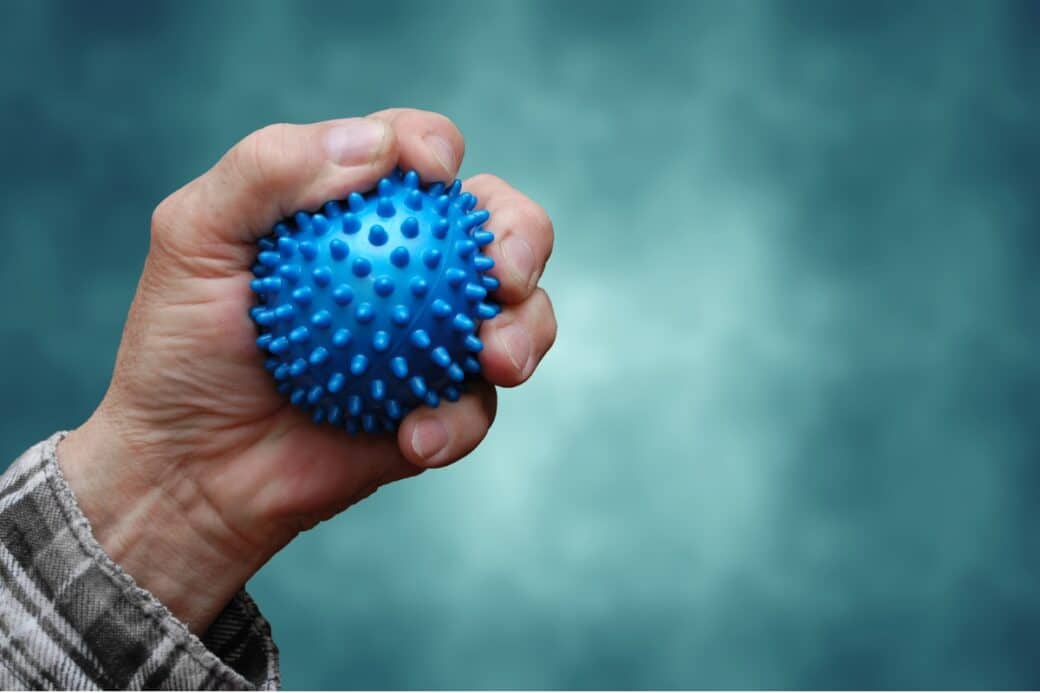Do you sometimes find it baffling how stress balls, those squishy, colorful little objects designed to help you relax, can actually evoke the opposite emotion? It’s almost like they have a secret power to make your blood boil. In this article, we’ll take a deep dive into the curious phenomenon of why stress balls can sometimes make you feel angry instead of calm. By exploring the underlying emotions and psychological factors at play, we hope to shed some light on this perplexing experience and perhaps find some unexpected solutions. So, get ready to unravel the mystery and discover the fascinating world of stress ball-induced anger.

Why Do Stress Balls Make Me Angry: Understanding Stress Balls
What are stress balls?
Stress balls are small, pliable objects that are designed to be squeezed and manipulated with the hands. They are typically made of foam or rubber and are commonly used as a stress-relief tool. Stress balls come in various shapes and sizes, with some even featuring fun and colorful designs. They are portable and easy to use, making them a convenient option for anyone looking to alleviate stress.
Purpose of stress balls
The primary purpose of stress balls is to provide a physical outlet for stress and tension. When you squeeze a stress ball, you engage the muscles in your hand and forearm, which helps to release tension and promote relaxation. The repetitive motion of squeezing and releasing the ball can also provide a soothing and calming effect on the mind, allowing you to focus on the present moment and distract yourself from stressful thoughts.
The science behind stress balls
Using stress balls can have a positive impact on your body and mind due to the science behind them. Squeezing a stress ball activates the muscles in your hand, causing them to contract. This contraction sends a message to your brain, triggering the release of endorphins, which are neurotransmitters that act as natural painkillers and mood boosters. The release of endorphins can help to reduce stress, improve mood, and promote overall well-being.
Interaction with Stress Balls
The normal reaction to stress balls
Most people have a positive and soothing reaction when using stress balls. When you squeeze a stress ball, you may feel a sense of relief and relaxation as the tension in your muscles dissipates. The repetitive motion of squeezing and releasing the ball can be comforting and provide a momentary distraction from stressors.
Mechanism of using stress balls
Using a stress ball is simple and straightforward. You hold the ball in your hand and apply gentle pressure by squeezing it. You can repeat this motion as many times as you like, adjusting the intensity of the squeeze to suit your preference. The soft and malleable nature of the ball allows it to mold to the shape of your hand, providing a comfortable and ergonomic grip.
Benefits of using stress balls
The benefits of using stress balls extend beyond simple stress relief. Regular use of stress balls can help to improve hand and forearm strength, as well as enhance motor skills and coordination. They can also be a useful tool for managing anxiety and promoting focus and concentration. Additionally, stress balls can provide a healthy outlet for pent-up emotions, allowing you to release tension in a safe and non-destructive manner.
Understanding Anger

Definition of anger
Anger is an intense emotional state that is characterized by feelings of displeasure, frustration, and hostility. It is a natural and normal response to certain situations or perceived threats. Anger can manifest in a variety of ways, ranging from mild annoyance and irritation to explosive outbursts and aggression.
Causes of anger
Anger can be caused by a wide range of factors, including external triggers such as stressful events, conflicts, or injustice, as well as internal factors such as unresolved emotions or unmet needs. It can also be influenced by individual differences in temperament, personality traits, and past experiences. Understanding the underlying causes of anger is essential for effectively managing and coping with this powerful emotion.
How anger manifests
Anger can manifest in different ways, both physically and emotionally. Physically, anger may be accompanied by increased heart rate, shallow breathing, muscle tension, and a surge of energy. Emotionally, anger can lead to feelings of intense frustration, irritability, or resentment. It may also result in aggressive behaviors such as yelling, arguing, or even physical violence. Understanding how anger manifests allows for better self-awareness and the ability to identify and manage anger triggers effectively.
The connection between Stress Balls and Anger
Why stress balls might induce anger
While stress balls are generally associated with stress relief, it is possible for some individuals to experience an unexpected emotional reaction, including anger, when using stress balls. This can be attributed to a variety of factors, such as individual differences in emotional processing, personal history with anger, or even the specific circumstances surrounding the use of stress balls.
Cases of people getting angry with stress balls
There have been anecdotal reports of individuals feeling anger or frustration while using stress balls. Some may find that the repetitive squeezing motion feels monotonous or ineffective, leading to increased frustration. Others may have a pre-existing aversion to certain textures or sensations, making the experience of squeezing a stress ball unpleasant. It’s important to remember that these cases are not the norm and that the majority of individuals find stress balls to be helpful in managing stress.
Research on the connection between stress balls and anger
Although limited, research has been conducted to explore the relationship between stress balls and anger. One study found that individuals with higher levels of trait anger were more likely to experience anger while using stress balls. However, further research is needed to understand the underlying mechanisms and to determine if these findings are applicable to a broader population. It’s important to note that findings from studies are not definitive and should be interpreted with caution.
Analyzing Individual Difference
Different emotional reactions to stress balls
Individuals may have different emotional reactions when using stress balls due to variations in temperament, personality traits, and individual experiences. For some, stress balls may elicit a sense of calm and relaxation, while others may find them ineffective or even aggravating. It’s crucial to recognize and respect these individual differences, as what works for one person may not work for another.
Influence of personality traits on reaction to stress balls
Personality traits can play a significant role in how individuals respond to stress balls. For example, individuals with lower levels of patience or a tendency towards perfectionism may be more likely to feel frustrated or impatient when using stress balls. On the other hand, individuals with a more relaxed or easygoing disposition may find stress balls to be soothing and enjoyable. Recognizing these individual differences can help tailor stress relief strategies to personal preferences and needs.
Role of individual experiences in reaction to stress balls
Past experiences with stress, anger, or similar stress relief tools can also impact one’s reaction to stress balls. If someone has had a negative experience or associated stress balls with a distressing event, it may trigger negative emotions or aversion. Conversely, individuals who have experienced positive outcomes or associations with stress balls are more likely to have a positive response. Reflecting on personal experiences can help identify any underlying factors contributing to emotional reactions.
Misperceptions and Misuse of Stress Balls
Common misconceptions about stress balls
There are a few common misconceptions surrounding stress balls that may contribute to misusing or misunderstanding their purpose. One misconception is that stress balls are a cure-all solution for stress and anger. While they can be helpful tools, they are not a substitute for addressing underlying issues causing stress or anger. Another misconception is that stress balls should always induce immediate relaxation. It’s important to remember that individual experiences may vary, and stress relief techniques may require experimentation to find what works best.
Possible misuse of stress balls
Misusing stress balls can occur when individuals rely solely on them as a coping mechanism, without exploring other strategies or seeking professional help when necessary. Additionally, using stress balls in a harmful or aggressive manner, such as throwing or squeezing excessively hard, can be counterproductive and potentially damaging. It’s essential to understand that stress balls are intended for gentle manipulation and not as tools for venting anger or frustration in a destructive way.
Efforts to rectify misunderstandings about stress balls
To rectify misunderstandings about stress balls, it is important to educate individuals about their intended use and limitations. Promoting a balanced approach to stress and anger management that incorporates a variety of strategies can help disperse misconceptions. Emphasizing that stress balls are just one tool among many in a comprehensive stress management plan can encourage individuals to explore different techniques and seek professional guidance when necessary.
Role of Expectations in Reacting to Stress Balls
Effects of expectations on reactions
Expectations can significantly influence one’s reactions to stress balls. If you approach stress balls with the expectation that they will provide instant relaxation and eliminate all stress, you may become disappointed or frustrated if they do not meet these high expectations. On the other hand, if you approach stress balls with an open mind and view them as one tool among many in your stress management toolkit, you are more likely to have a realistic and positive experience.
Managing expectations with stress balls
Managing expectations with stress balls involves setting realistic goals and recognizing their limitations. Acknowledge that while stress balls can be helpful, they are not a magical fix that will instantly resolve all stress and anger. Incorporate stress balls as part of a broader stress management plan that includes other techniques and strategies. By diversifying your stress relief practices, you can manage expectations and increase the likelihood of finding approaches that work best for you.
The disappointment-anger connection with stress balls
In some cases, unmet expectations surrounding stress balls can lead to an emotional reaction, including anger or frustration. If you find yourself feeling angry when using stress balls, it’s essential to reflect on your expectations and identify any underlying factors contributing to these emotions. Remind yourself that stress relief is a journey, and it may take time to find the combination of techniques that works best for you. Managing and processing any feelings of disappointment or anger in a healthy manner is crucial for overall well-being.
Role of Stress in Evoking Anger
Understanding stress
Stress is a natural response to demanding or challenging situations. It is the body’s way of mobilizing resources to cope with perceived threats. While stress can be beneficial in small doses, chronic or excessive stress can have negative effects on physical and mental health, including increased irritability and anger.
Relation between stress and anger
Stress and anger are closely linked. When you experience stress, it can activate the body’s “fight or flight” response, which prepares you for potential threats. This heightened state of arousal can make you more susceptible to anger, as stress can lower your tolerance for frustration and make it more difficult to regulate your emotions. It’s important to recognize the connection between stress and anger and to develop effective stress management techniques to prevent anger from escalating.
Role of stress balls in stress increase
While stress balls are designed to alleviate stress, there may be instances where they inadvertently contribute to increased stress levels. This can occur when individuals place unrealistic expectations on stress balls, expecting them to completely eliminate stress. Additionally, if stress balls are used exclusively and exclusively relied upon as a stress management tool without addressing underlying stressors, they may provide only temporary relief, leading to a cycle of increased stress and frustration. Incorporating stress balls as part of a comprehensive stress management plan is essential to prevent them from contributing to increased stress levels.
Healthy Alternatives to Stress Balls
Other stress-relieving tools
Stress balls are just one tool among many that can help manage stress. Exploring other stress-relieving tools can provide additional options for coping with stress and anger. Some alternatives to stress balls include fidget spinners, sensory toys, meditation, deep breathing exercises, yoga, physical exercise, and journaling. Experimenting with different techniques and finding what works best for you can enhance your stress management arsenal.
Practices for managing stress without stress balls
If stress balls do not resonate with you or if you’re looking for additional stress management practices, there are various approaches you can explore. Engaging in regular physical exercise, such as walking, jogging, or dancing, can help reduce stress and enhance mood. Practicing mindfulness or meditation can promote relaxation and calm the mind. Developing a support network of friends, family, or a therapist can provide a safe space to express emotions and find support. Additionally, engaging in hobbies or activities that bring joy and fulfillment can serve as effective stress relievers.
Potential benefits of alternative approaches
Alternative approaches to stress management can offer unique benefits. For example, physical exercise not only helps reduce stress but also releases endorphins, promoting a positive mood. Mindfulness and meditation practices can increase self-awareness and provide tools for managing stress in the present moment. Developing a support network fosters connection and provides opportunities for sharing experiences and gaining perspective. Exploring alternative approaches can broaden your stress management toolkit and enhance overall well-being.
Seeking Professional Help
When to seek professional help
While stress balls and other stress management techniques can be effective for many individuals, there may be times when professional help is necessary. If you find that your stress and anger are interfering with your daily life, relationships, or overall well-being, it may be beneficial to seek the assistance of a therapist or mental health professional. They can provide guidance, support, and specialized techniques for managing stress and anger, tailoring strategies to your unique needs.
Role of therapists in dealing with stress and anger
Therapists play a crucial role in helping individuals manage stress and anger. They can provide a safe and nonjudgmental environment for exploring and processing emotions. Therapists use evidence-based techniques such as cognitive-behavioral therapy (CBT) to help individuals identify and change unhelpful thought patterns and behaviors. They can also provide tools and coping strategies to effectively manage stress and anger, tailoring their approach to suit each individual’s specific needs.
Techniques employed by professionals in stress and anger management
Therapists employ various techniques to help individuals manage stress and anger effectively. Cognitive-behavioral therapy (CBT) helps individuals identify and challenge negative thought patterns and develop healthier coping mechanisms. Relaxation techniques, such as deep breathing exercises and progressive muscle relaxation, can promote relaxation and reduce stress. Mindfulness-based interventions teach individuals to be present in the moment and to adopt a non-judgmental attitude toward their thoughts and emotions. By working with a therapist, individuals can learn valuable skills and strategies for managing stress and anger in a healthy and constructive manner.
In conclusion, stress balls can be a valuable tool for managing stress and promoting relaxation. While their primary purpose is to provide a physical outlet for stress and tension, individual reactions to stress balls may vary. It is essential to recognize and respect these individual differences and to manage expectations when incorporating stress balls into a stress management plan. Additionally, exploring alternative stress-relieving tools and seeking professional help when needed can further enhance one’s ability to effectively manage stress and anger. Remember, finding what works best for you may involve a combination of strategies, and it is important to prioritize your overall well-being in the journey toward stress and anger management.




